Carnivorous Plants:
|
Classification
Phylogeny World Map Illustrations References |
| CP Book Library |
| CP Web Links |
2009-June-13
Sarracenia rubra subspecies alabamensis
The canebrake
pitcher plant, as locally known, Sarracenia rubra ssp.
alabamensis is found only in three counties in central Alabama. Now
extant in 5 locations in Autauga, 5 locations in Chilton, and 2
locations in Elmore County, subspecies alabamensis is on the
federal endangered list. Only four of these 12 sites are said to have a population
of 70-300 plants, and 6 sites having a population of 2-20
plants each.
(Reference: U.S. Fish and Wildlife Service, Division of Endangered
Species, Species Accounts - Alabama Canebrake Pitcher-Plant)
Carnivorous
Plants in the Wilderness: Sarracenia rubra ssp.
alabamensis
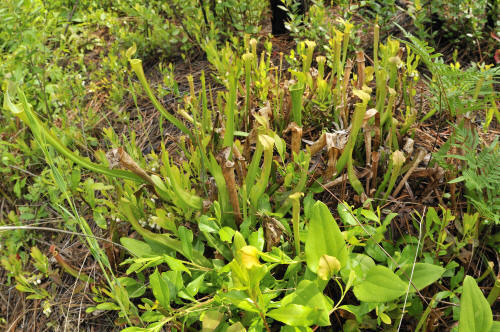
The pitcher plants share the central Alabama forest with cinnamon ferns (Osumanda cinamomea) and laurel greenbrier (Smilax laurifolia).
Carnivorous
Plants in the Wilderness: Sarracenia rubra ssp.
alabamensis
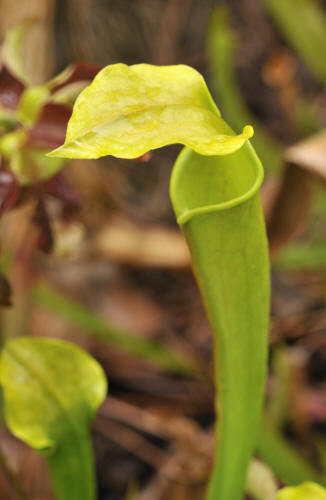
Carnivorous
Plants in the Wilderness: Sarracenia rubra ssp.
alabamensis
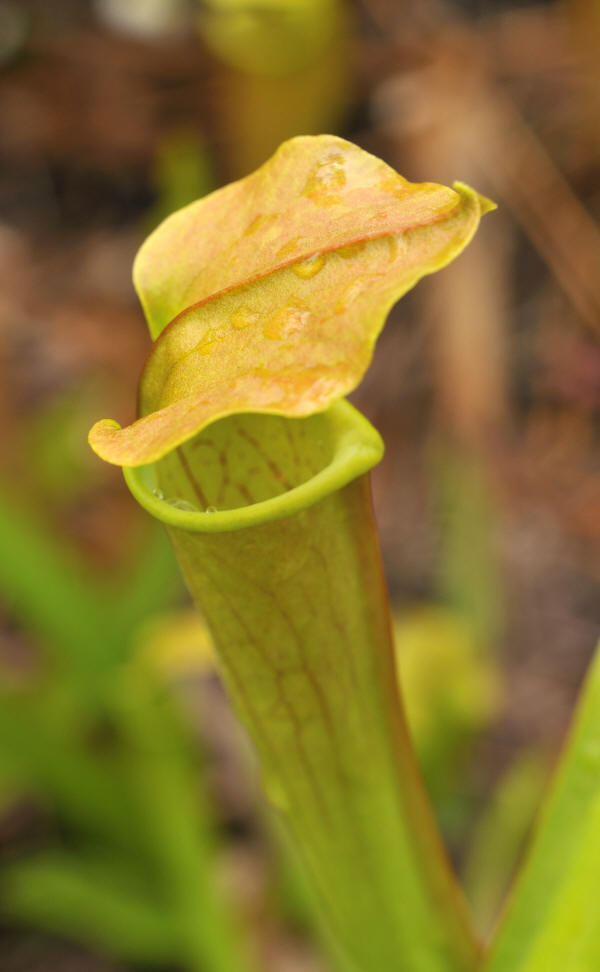
The tallest spring pitcher I was able to observe in this colony measured 35 cm. (May 6, 2009) Incidentally, Sarracenia rubra in general is known to produce the second set of pitchers in autumn, which are taller than the spring leaves. The tallest flower scape was 45 cm.
Carnivorous
Plants in the Wilderness: Sarracenia rubra ssp.
alabamensis
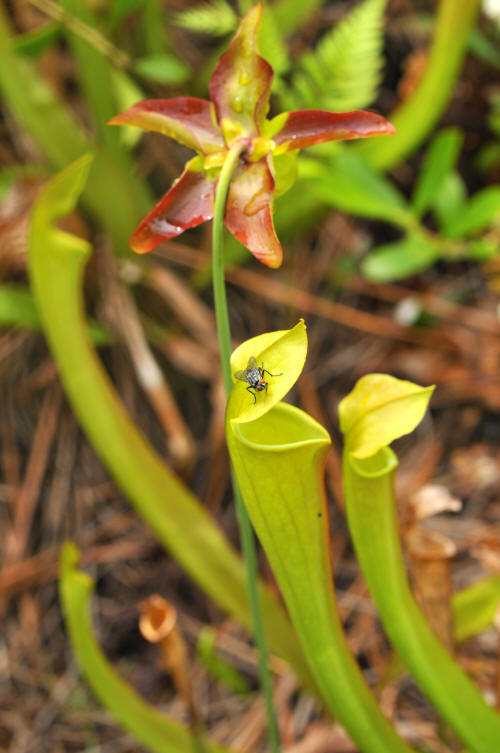

A fly enjoys fresh, after-rain mountain air atop a newly formed canebrake pitcher plant's leaf.
Carnivorous
Plants in the Wilderness: Sarracenia rubra ssp.
alabamensis
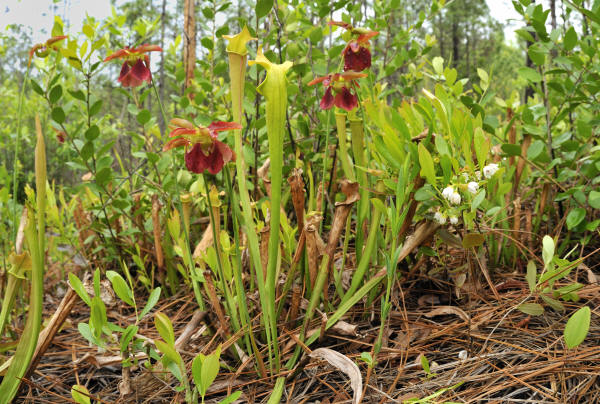
On May 6, 2009, the flowering of S. rubra ssp. alabamensis was almost over. Here and there, I was able to spot some flowers with five, more or less undamaged petals still remaining. I would guess the flowering period of this subspecies is from early April to early May, with the peak flowering falling around April 20th. Comparing two rubra subspecies, wherryi and alabamensis, the flowering period is delayed by a week or so for the latter, probably due to the more northern latitude of alabamensis habitats.
Carnivorous
Plants in the Wilderness: Sarracenia rubra ssp.
alabamensis
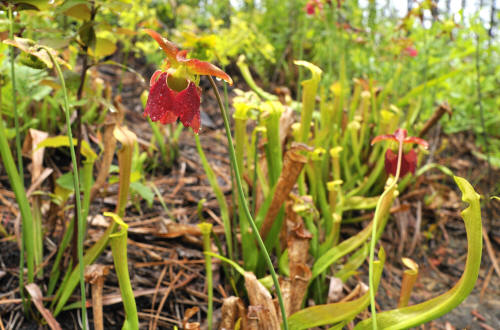
Carnivorous
Plants in the Wilderness: Sarracenia rubra ssp.
alabamensis
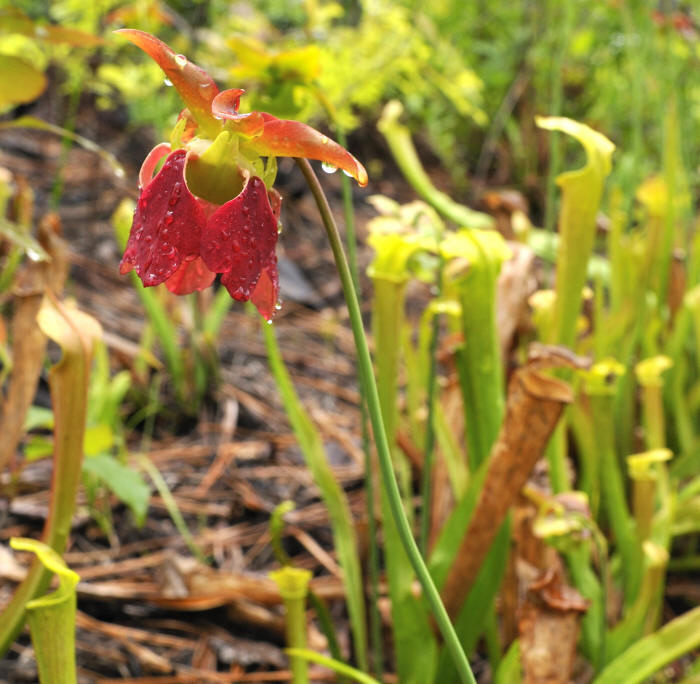
Yep, you
guessed it. It was a rainy day, to say the least.
Morning hours were kind-a-cloudy, raining on and off lightly. So I
started walking into the forest looking for the pitcher plants. When
rain came I took cover under the tree. But, the rain was getting
increasingly heavier. And then getting violent, with thunders. By the
time I decided to retreat, I was wet from head to toe. I could not have
been any wetter if I had jumped into the pool with my clothes on.
......After the storm had passed, I did see some sunshine in the
afternoon.
Carnivorous
Plants in the Wilderness: Sarracenia rubra ssp.
alabamensis
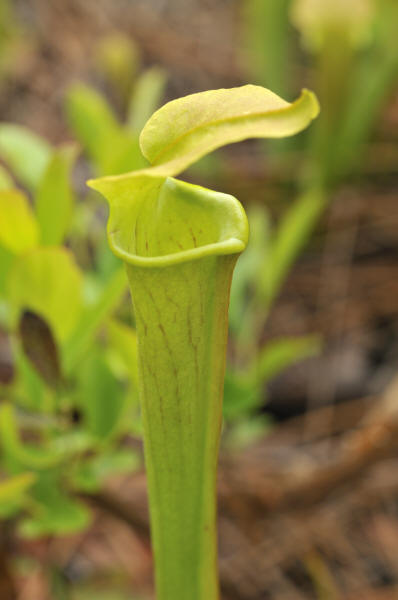
Carnivorous
Plants in the Wilderness: Sarracenia rubra ssp.
alabamensis

Short hairs cover the pitcher exterior, as typically observed in Sarracenia rubra species.
Carnivorous
Plants in the Wilderness: Sarracenia rubra ssp.
alabamensis
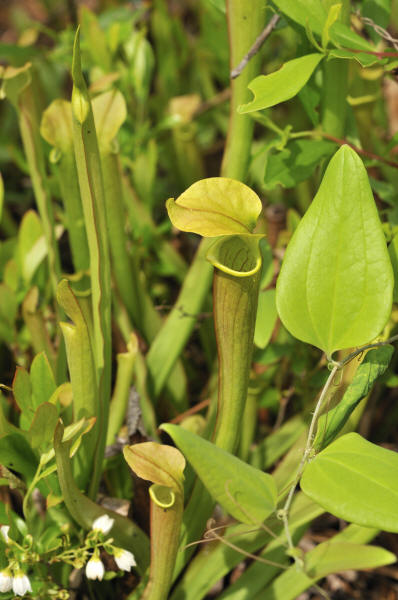
Carnivorous
Plants in the Wilderness: Sarracenia rubra ssp.
alabamensis
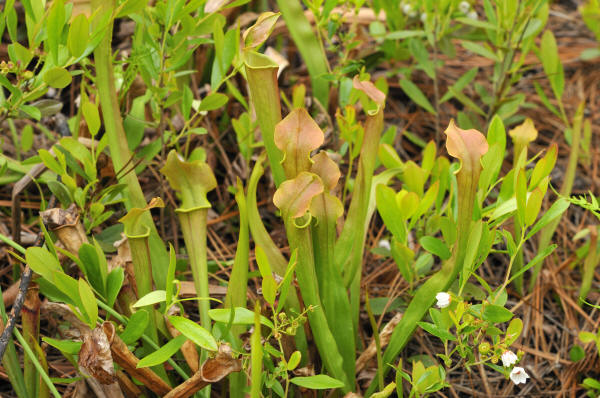
Newly emerged spring pitchers are copper-tinted on the wavy lid.
Carnivorous
Plants in the Wilderness: Sarracenia rubra ssp.
alabamensis

Carnivorous
Plants in the Wilderness: Sarracenia rubra ssp.
alabamensis
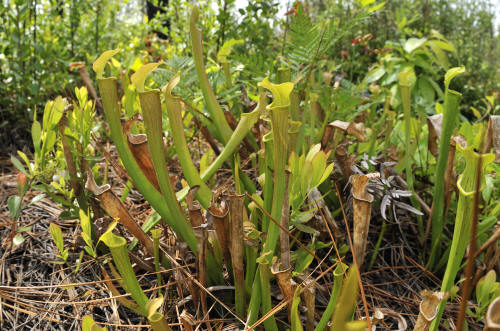
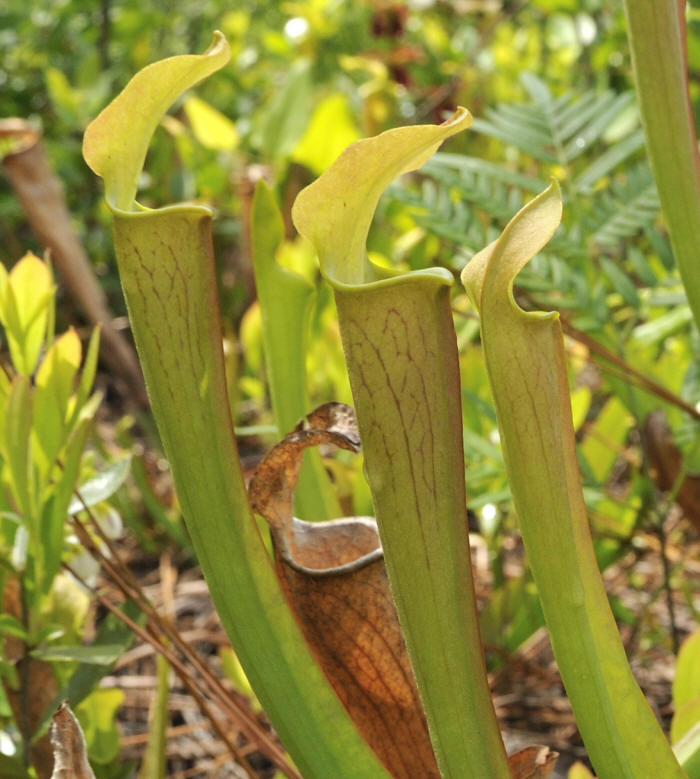
Carnivorous
Plants in the Wilderness:
Gaylussacia dumosa
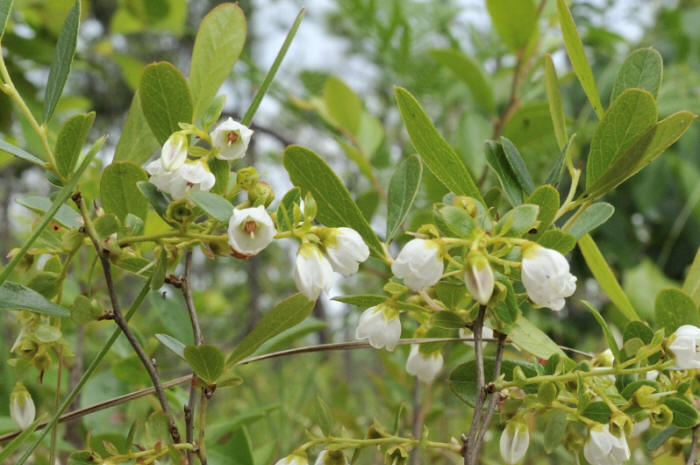
The moist forest floor was covered with tiny white blossoms of dwarf huckleberry, a low-lying shrub belonging to the Heath family.
Carnivorous
Plants in the Wilderness:
Gaylussacia dumosa

Dwarf Huckleberry typically forms large colonies on the forest floor. The fruits are edible, sometimes used as a pie filling.
Carnivorous
Plants in the Wilderness: Drosera brevifolia

I found a colony of this small sundew species, Drosera brevifolia. right in the midst of S. alabamensis population. The plant is quite common in the southeastern coastal plain, but I never noticed this sundew last time I visited here. Incidentally, as I was looking at this picture at home, at high magnification, I noticed some green thread-like thing (on the lower-right of the picture) that I had not noticed when I was taking the picture. It appears to be a bladderwort of some kind. An easy guess is a common Utricularia subulata, but this vegetative part appears more like an aquatic species than terrestrial to me.
Carnivorous
Plants in the Wilderness: Sarracenia rubra ssp.
alabamensis habitat, central Alabama

Click for a large image (warning: this is a 10MB image file)
The
forest where colonies of Sarracenia rubra ssp. alabamensis
are found. Central Alabama. May 6, 2009.
Nikon D300, Ai Nikkor 20mm F3.5, 1/180, F8, ISO200.
Carnivorous
Plants in the Wilderness: Sarracenia rubra ssp.
alabamensis
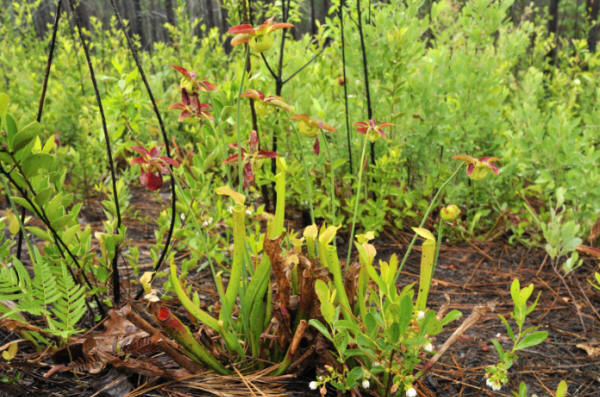
Carnivorous
Plants in the Wilderness: Sarracenia rubra ssp.
alabamensis
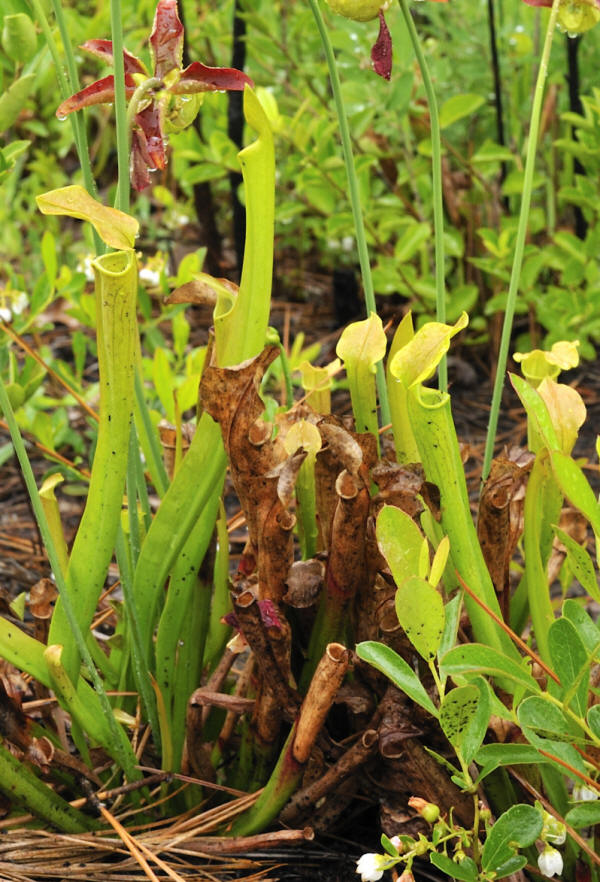
Carnivorous
Plants in the Wilderness: Sarracenia rubra ssp.
alabamensis
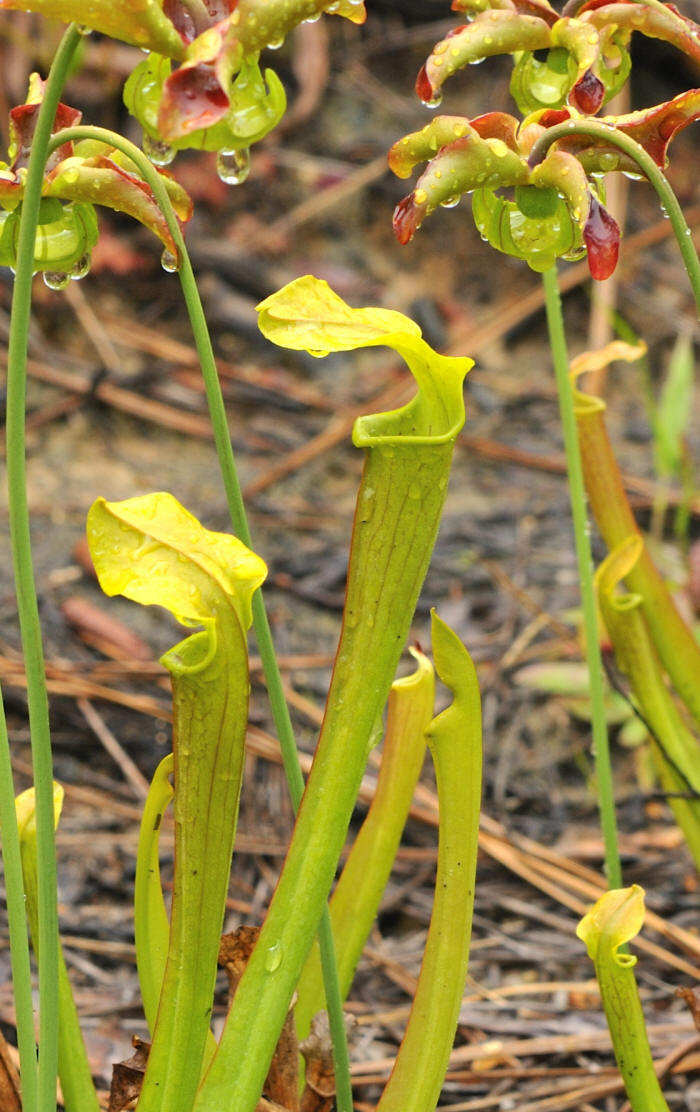
Carnivorous
Plants in the Wilderness: Sarracenia rubra ssp.
alabamensis
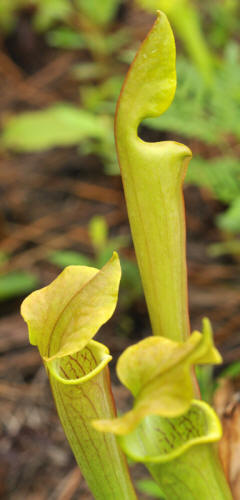

This is how you would cut the paper if you want to make a precise replica of Sarracenia rubra ssp. alabamensis for your origami (folding paper) class project. Note the width of the ala (wing) that should be glued!
Carnivorous Plants in the Wilderness: Sarracenia rubra ssp. alabamensis
| Carnivorous Plants Photography Web Site: Copyright © 2001-2018 Makoto Honda. All Rights Reserved. |